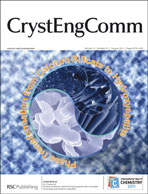Crystalline perfection, EPR, prism coupler and UV-VIS-NIR studies on Cz-grown Fe-doped LiNbO3: A photorefractive nonlinear optical crystal
Abstract
The Fe-doped (0.05 mol%) lithium niobate (LiNbO3) bulk single crystal was gown by the Czochralski (Cz) method using a co-axial two zone low thermal gradient furnace. The crystalline perfection of the grown crystal was evaluated by high resolution


 Please wait while we load your content...
Please wait while we load your content...